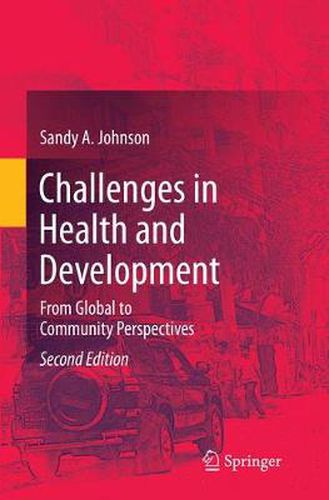Readings Newsletter
Become a Readings Member to make your shopping experience even easier.
Sign in or sign up for free!
You’re not far away from qualifying for FREE standard shipping within Australia
You’ve qualified for FREE standard shipping within Australia
The cart is loading…






This textbook examines strategies of investing in human health and investing in economic growth as distinct approaches to development. It explores the symbiotic relationship of these tactics, and considers the applications and outcomes from a global, national and community level perspective. Each chapter introduces concepts of economic development and population health, and uses case studies to illustrate the same. These case studies include program and policy examples from Bangladesh, Chile, Haiti, Rwanda, South Africa and Sri Lanka. The textbook also examines the impact of macroeconomic adjustment programs, health care restructuring, investment in primary health care, public-private partnerships, and the challenges of program coordination and up-scaling in stable and conflict-ridden countries. Discussion questions are provided at the end of each chapter to facilitate classroom activities. Solutions are provided at the end of the textbook.
$9.00 standard shipping within Australia
FREE standard shipping within Australia for orders over $100.00
Express & International shipping calculated at checkout
This textbook examines strategies of investing in human health and investing in economic growth as distinct approaches to development. It explores the symbiotic relationship of these tactics, and considers the applications and outcomes from a global, national and community level perspective. Each chapter introduces concepts of economic development and population health, and uses case studies to illustrate the same. These case studies include program and policy examples from Bangladesh, Chile, Haiti, Rwanda, South Africa and Sri Lanka. The textbook also examines the impact of macroeconomic adjustment programs, health care restructuring, investment in primary health care, public-private partnerships, and the challenges of program coordination and up-scaling in stable and conflict-ridden countries. Discussion questions are provided at the end of each chapter to facilitate classroom activities. Solutions are provided at the end of the textbook.